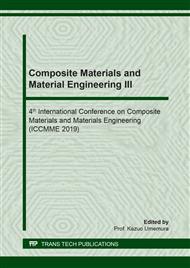p.385
p.391
p.397
p.404
p.410
p.416
p.424
p.430
p.436
Utilization of Electric Arc Furnace Oxidizing Slag in Construction Materials
Abstract:
The electric arc furnace oxidizing slag (EOS) is the by-product produced in the steelmaking process. The amount of EOS production through the process is very large. If it is disposed in the environment, the exposed EOS may cause severe damage to the surrounding. The EOS has the potential of replacement for construction materials. However, a large amount of lime is added to the steelmaking process to release free calcium oxide (f-CaO). The calcium hydroxide (Ca (OH)2) which produced by calcium oxide hydration after a long time may cause material volume expansion which result in the disadvantage effects on volumetric stability. According to various experiments on volumetric stability in this study, the average content of the free calcium oxide in the fine EOS is 0.64% and the average content the free calcium oxide in the coarse EOS is extremely low. The test result is determined by the ethylene glycol method. The EOS is made into cement mortar bars (water:cement:EOS = 0.5:1:3), the results showed that the cement mortar bars cracked after autoclave expansion test. The volumetric stability of the EOS is unqualified.
Info:
Periodical:
Pages:
430-435
Citation:
Online since:
May 2019
Authors:
Price:
Сopyright:
© 2019 Trans Tech Publications Ltd. All Rights Reserved
Share:
Citation:


